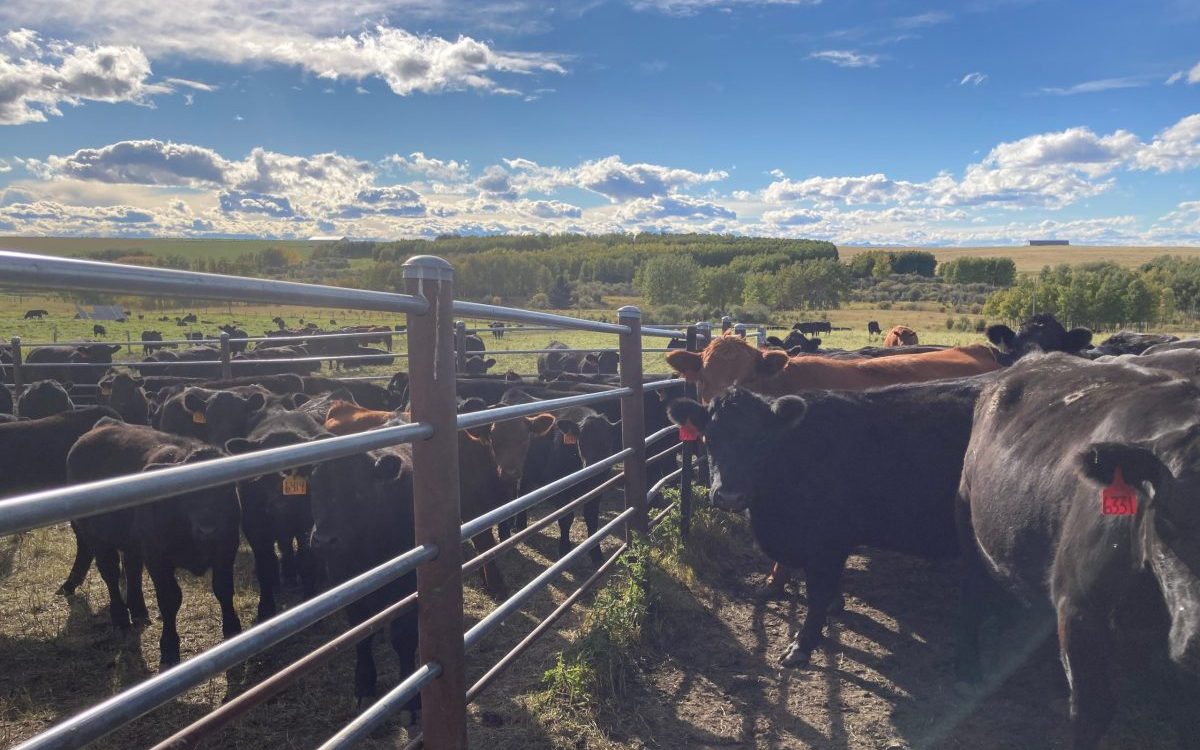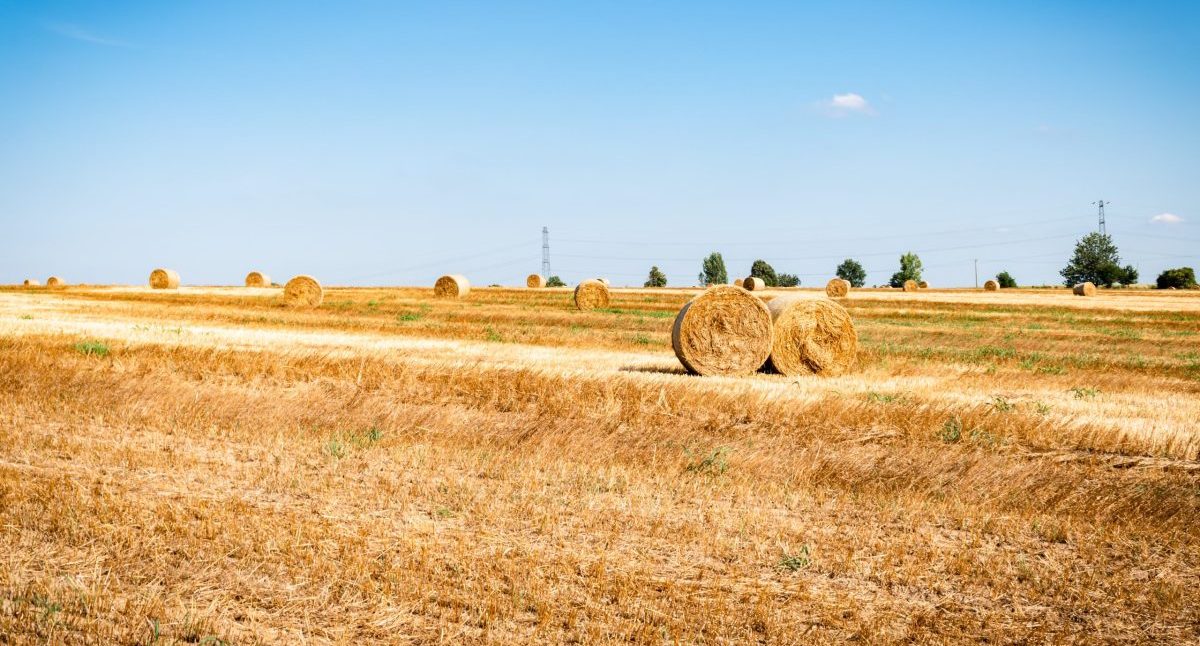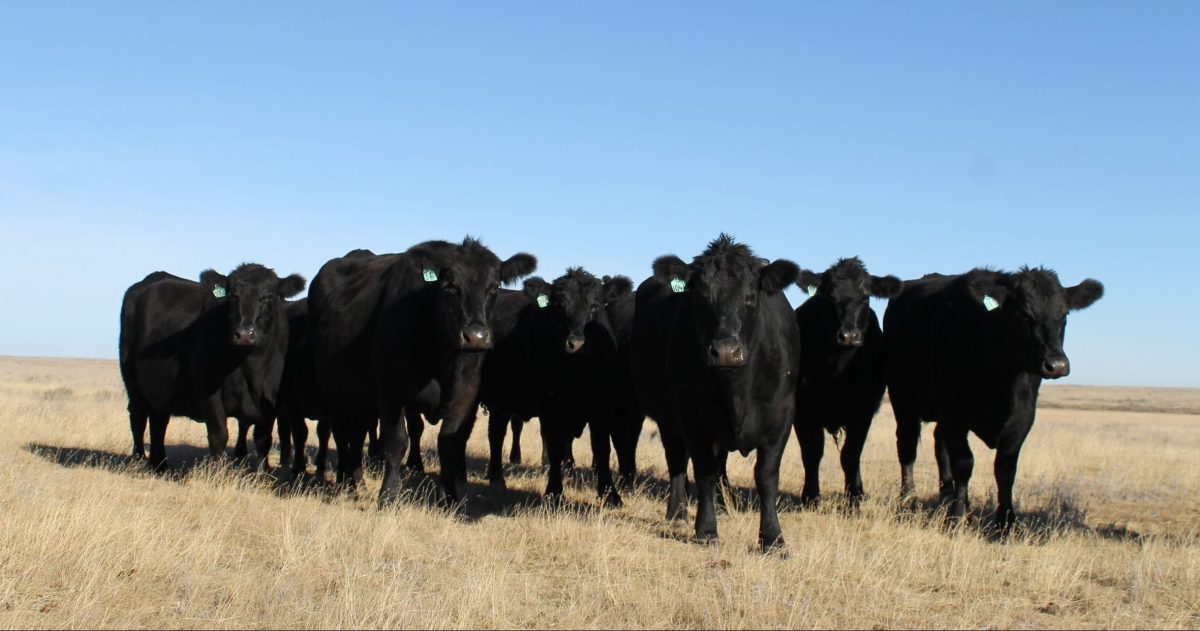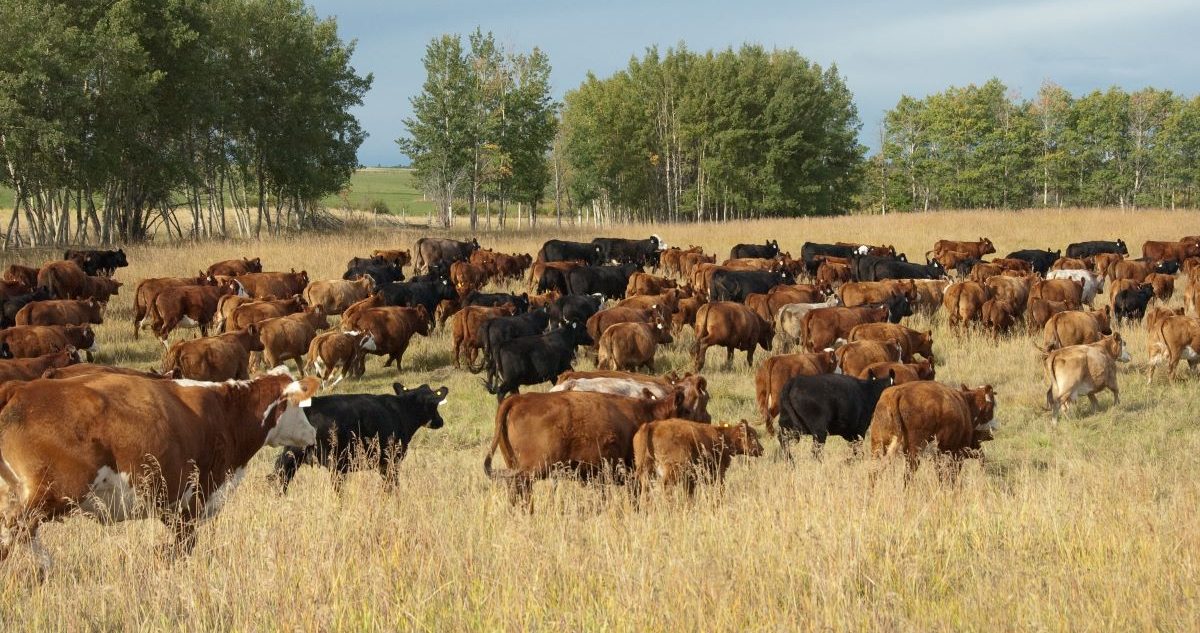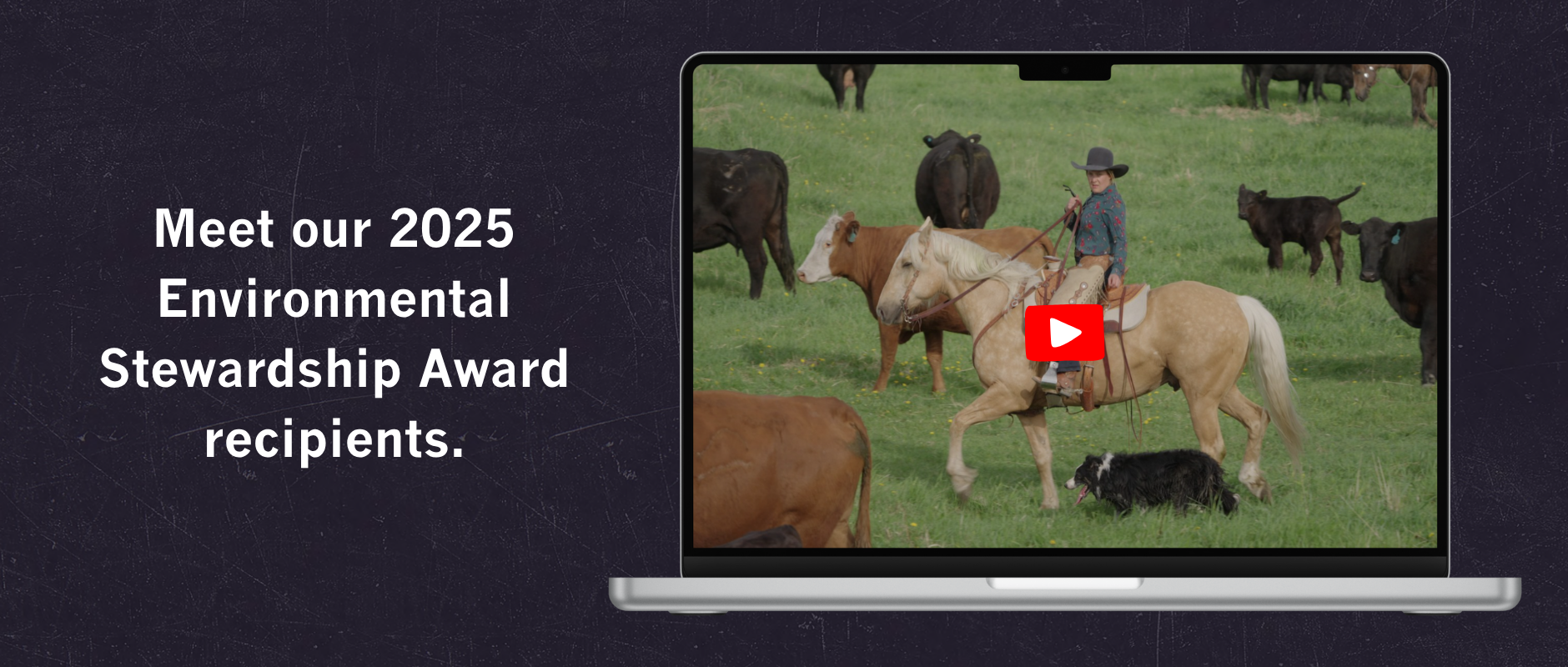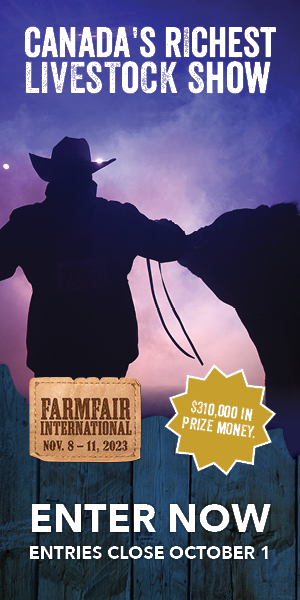AB Direct - Steers
Rail: ---
AB Direct - Heifers
Rail: ---
US Trade- Steers
Rail: 290.00 (IA)
US Trade - Heifers
Rail: 290.00 (IA)
Canadian Dollar
0.02
What We’re Reading | The link between toe tip necrosis in cattle and flooring
By Murray Jelinski, Canadian Cattleman Toe tip necrosis syndrome is a hind-limb lameness of feedlot cattle that develops days to weeks after arrival at the feedlot. This disease is also known by many other names: toe abscess, toe ulcer, P3 necrosis, toe necrosis, apical white line disease, apicus necrotica, and the list goes on. The…
Grazing stubble fields
ABP is excited to feature the writings of Barry Yaremcio, ruminant nutritionist and production management consultant. Barry is a trusted voice in cattle nutrition and forage production, operating Yaremcio Ag Consulting Ltd. This article was originally published on his BYOB Blog, which can be found on his website. With forages in short supply and high…
What We’re Streaming | Ergot Toxicity with Dr. Gabriel Ribeiro
By Dr. John Campbell, The Beef Cattle Health and Nutrition Podcast “Dr. Gabriel Ribeiro from the Dept. of Animal and Poultry Science at the University of Saskatchewan is my guest this week. He has been researching the impacts of ergot in feed sources on cattle performance and he will discuss the levels of ergot that are safe…
Making silage in a dry year
ABP is excited to feature the writings of Barry Yaremcio, ruminant nutritionist and production management consultant. Barry is a trusted voice in cattle nutrition and forage production, operating Yaremcio Ag Consulting Ltd. This article was originally published on his BYOB Blog, which can be found on his website. Plants grown under dry conditions have a…
What We’re Reading | Research identifies cow efficiency
By Karen Briere, The Western Producer Forage-efficient cows maintain their back fat during winter, calve earlier in the calving season and wean heavier calves relative to their own weight, according to a University of Saskatchewan study. Dr. Greg Penner said the study shows how cow-calf producers can assess their cows without relying on feed-use efficiency,…
Plan now to secure winter feed supplies
ABP is excited to feature the writings of Barry Yaremcio, ruminant nutritionist and production management consultant. Barry is a trusted voice in cattle nutrition and forage production, operating Yaremcio Ag Consulting Ltd. This article was originally published on his BYOB Blog, which can be found on his website. In many areas, soil moisture was lacking…
FMD biosecurity advice for international travellers
If you’re planning an international trip or will soon be welcoming international visitors to your operation, keep biosecurity in mind. While Canada is free of Foot and Mouth Disease (FMD), this highly contagious virus is presently the greatest health risk to Canadian livestock. Many countries in Asia, Africa, and South America are positive for FMD,…
What We’re Reading | Taking pain management mainstream
Producers add pain medication to their routines and benefit their herds By the Beef Cattle Research Council Pain management for beef cattle has evolved significantly in the past two decades. Scientists have gained a greater understanding of what pain looks like in an animal and how reducing pain can affect an animal’s well-being. The beef…
What We’re Reading | One Health strategies help a farm family navigate a “winter from hell”
By the Beef Cattle Research Council For Tyler and Nancy Haraga, March 10, 2018, will forever stand out in their minds. “It was forty below with four to five feet of snow,” recalls Tyler. It had been a brutal winter, with unrelenting cold and record snowfall that persisted into March and spring simply refused to…
What We’re Streaming | A case from the disease investigation unit files
By Dr. John Campbell, The Beef Cattle Health and Nutrition Podcast “This week’s episode is a bit different from usual. I don’t have a guest this week, but I’ll be presenting an outbreak from our Disease Investigation Unit case files. “This case was also presented as part of a series of cases in a webinar…
What We’re Streaming | Foreign animal disease planning and prevention for cattle
By the WeCAHN Podcast, produced by the Western Canadian Animal Health Network Dr. Karin Orsel, a professor in epidemiology and infectious diseases from the University of Calgary, has some up close and personal experience with the impacts of bovine infectious disease outbreaks for some diseases of cattle that currently don’t exist in Canada. These foreign…
Fact Sheet: What causes diarrhea in calves?
With calving season in full swing for many beef producers, the issue of calf scours may arise. Understanding the causes of this disease can help with our preventative efforts. This fact sheet, created through the Canadian Agricultural Partnership, provides valuable information on why a calf may be susceptible to scours, and the differences in major…




